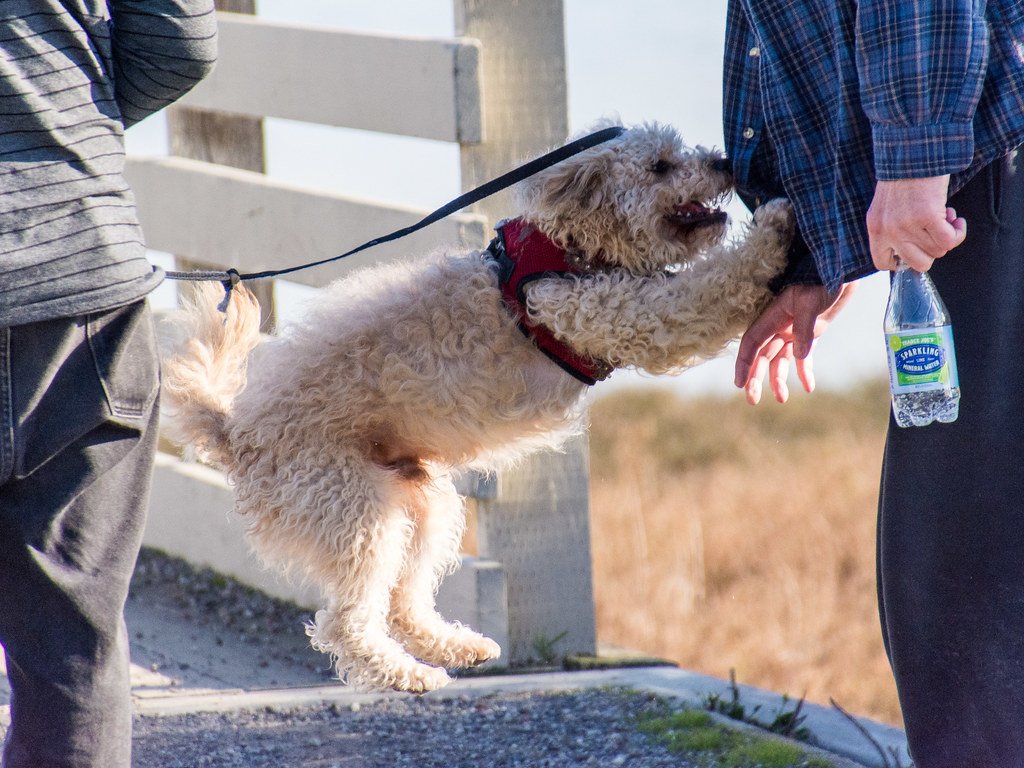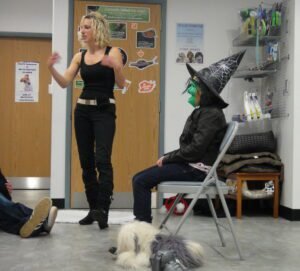Does this scenario sound familiar?
You’re dressed to impress, ready to leave home for an important business or social gathering.
You’re about to open the door when your dog—who doesn’t want you to go without him—jumps up on you, leaving smudgy paw marks and pet hair on your best clothes.
Feeling exasperated, you raise your voice and shove your dog away from you, which does nothing to change his future behavior and quite possibly leaves him feeling a little confused and with hurt feelings in the present.
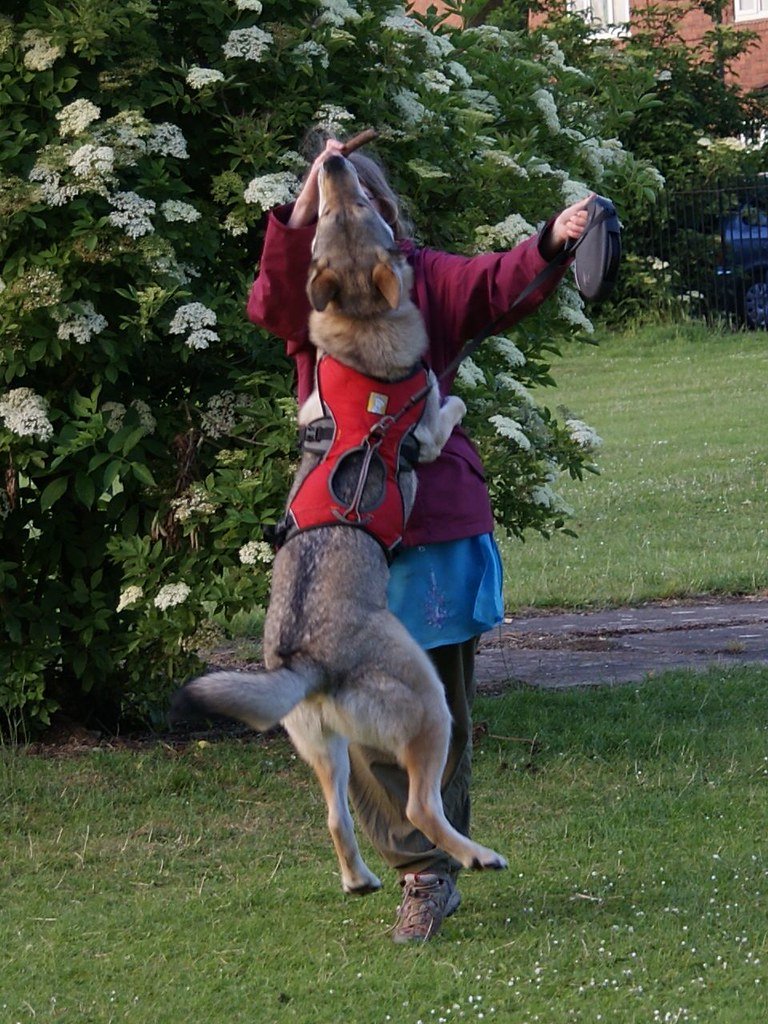
Or, you’re walking your dog right before bedtime. The hour is late, you’re tired, it’s beginning to rain and your umbrella is back at the house.
You really want your pooch to hurry up and pee so you can both go back inside—but your dog is having such a tough time finding the perfect clump of grass to water that getting to bed looks like being an hour away.
Don’t feel like the Lone Ranger. Even the most experienced animal communicators can find it difficult to alter canine behaviors like these.
Just remember that the trick to changing a dog’s natural behavior lies in creating positive experiences, preferably ones that provide multiple positive reinforcements for the behavior you desire.
Consistently visualizing what you want your dog to do is tremendously important. Because visualization is the most ancient and powerful means of communicating, animals always give precedence to the images we hold in mind over our verbal cues.
Unfortunately, we humans tend to unconsciously hold the image of the behavior we don’t want in our minds instead of the action we would like the animal to take.
When our mental images are different from the verbal commands we give, animals choose to obey the mental image almost every time!

Teach jumping on, before staying off
Now, to help you solve the first of the two very common problems mentioned above: In order to teach your dog not to jump on you, you must actually teach him to jump on you first.
There are two psychologically sound reasons for this approach.
The first is that teaching your dog to jump on you is easy because jumping is something most dogs enjoy.
The second is that teaching him to jump on you provides a frame of reference for staying off of you.

Begin by changing into some clothes comfortable for playing with your dog. Invite him to come and sit in front of you and provide a soft food treat when he does.
Picture your dog standing on his hind legs with his front paws on your chest as you pat your chest invitingly and say, “Come up!” in a friendly, playful tone of voice.
The moment your dog obeys, spend a minute petting and praising him, telling him how smart he is. Then, using the same friendly tone of voice, say, “Off” as you gently place your hands flat against on his chest and lower him into a sitting position in front of you again.
Spend no more than five minutes repeating this sequence before ending the training time.
Add visual reinforcement
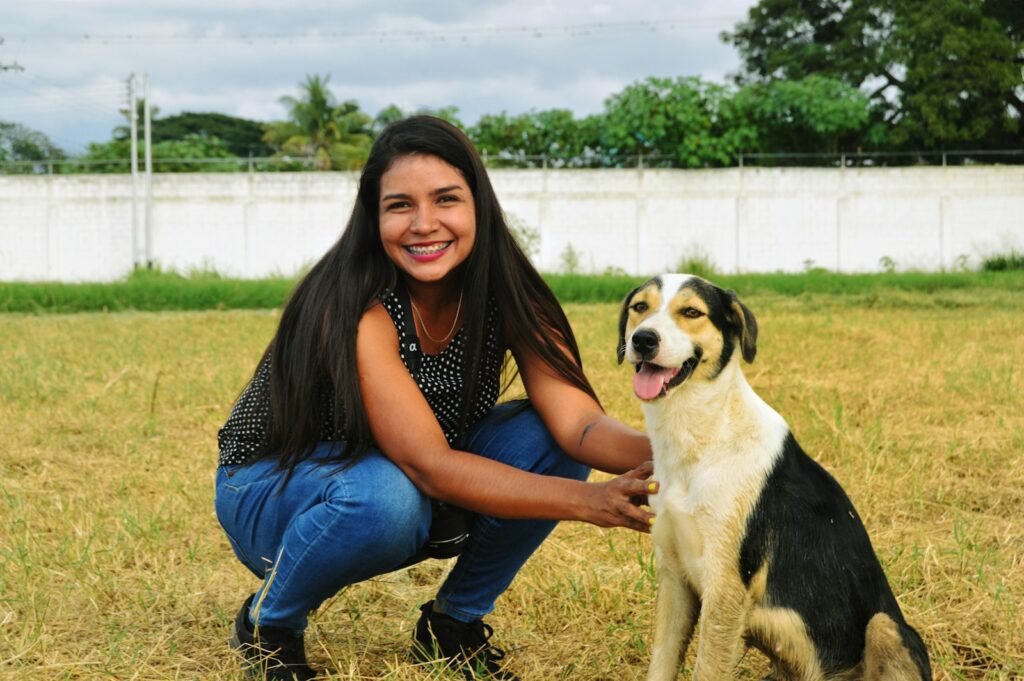
Repeat the sequence several more times during your next training time, which can be later the same day. This time, after praising your dog for jumping up as instructed, hold your hand palm facing out in front of the dog’s face for a second before saying “Off.”
This adds a visual reinforcement to the verbal command and helps you to shift the mental image you’re holding from “on me” to “off of me.”
Gradually increase your emphasis on the hand signal until you feel confident your dog understands what it means. Then call the dog to you, but hold your palm up and say “off” before he begins to jump.
Reward him for staying off with praise and a treat. When your dog has this sequence down pat, you’ll never have to worry about his jumping on you without an invitation again!
Once you have taught your dog when he can and can’t jump on you, you can take it a step farther and teach him he can jump up and down with you. Just start jumping up and down yourself after you have given the “off” hand signal.
Your dog may initially misinterpret this as an invitation to jump on you, but just continue to give the “off” signal and continue jumping, and your dog will soon catch on and enjoy this new game.
And now, a few words about peeing…
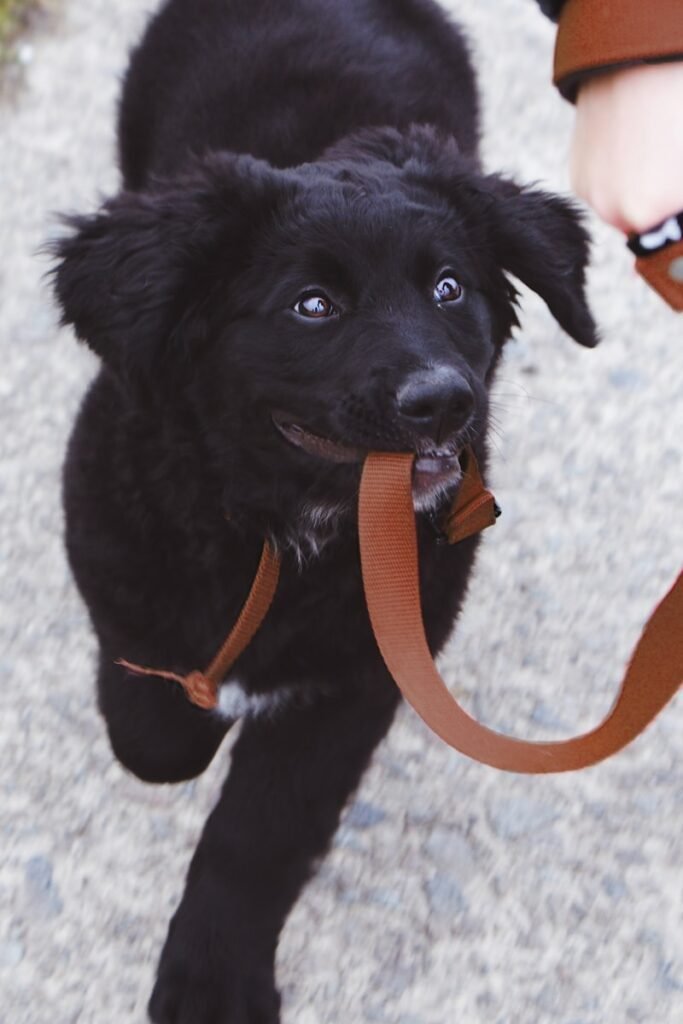
Finding precisely the right spot to pee is terribly important to dogs. They can spend hours sniffing every tree, shrub and blade of grass in an area no bigger than the average garage.
And while allowing our pets to retain as much of their culture as possible, sometimes we simply need them to hurry it up a bit.
The way to speed up your dog’s “relief trips” is to cue the dog to do what you want as he or she is actually doing it. In other words, when your pooch starts to pee, say, “find a spot, find a spot, find a spot” over and over again to set up an association in your dog’s mind between the cue phrase and the action you want.
Be patient—it usually takes a number of sessions for this association to be firmly made. But once it is, all you have to do is say, “Find a spot, Spot” and you’re on your way back home!

